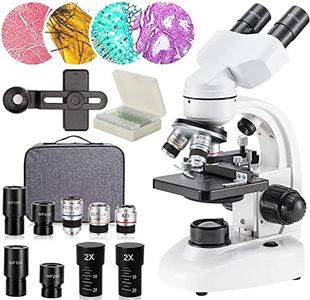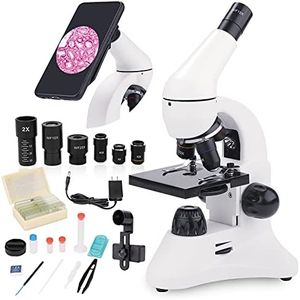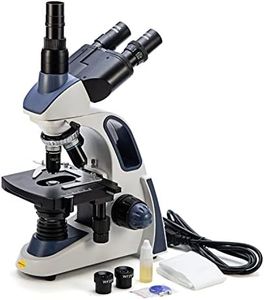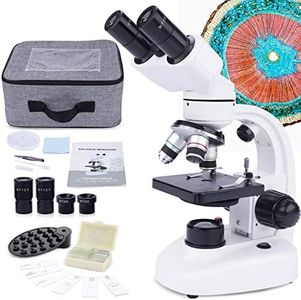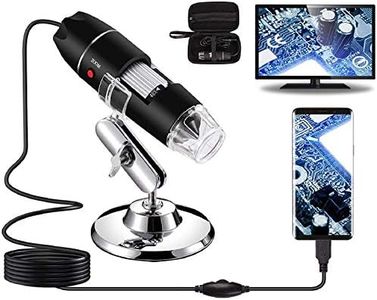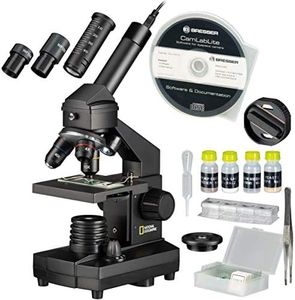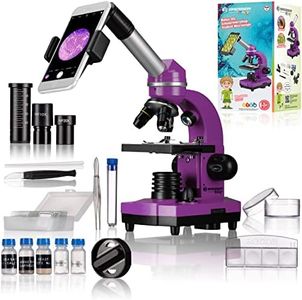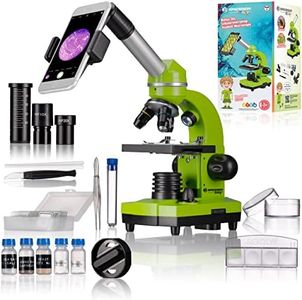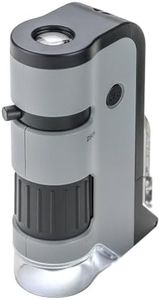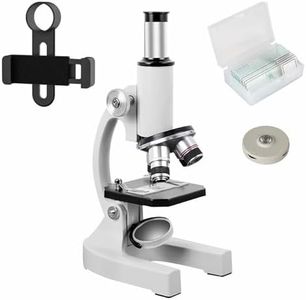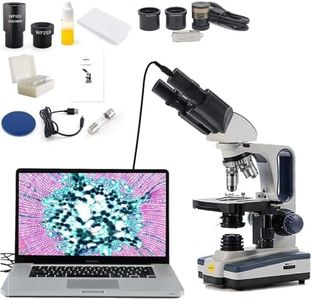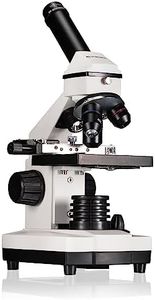We Use CookiesWe use cookies to enhance the security, performance,
functionality and for analytical and promotional activities. By continuing to browse this site you
are agreeing to our privacy policy
10 Best Student Microscopes
From leading brands and best sellers available on the web.Buying Guide for the Best Student Microscopes
Choosing a student microscope can be exciting because it opens up a whole new visual world. Whether you're purchasing for classroom use, homeschool activities, or a young person passionate about science, understanding the main features will help you find a microscope that is easy to use, reliable, and well-suited for its intended purpose. Start by thinking about the user's age, what they want to observe (prepared slides, pond water, plant tissue, etc.), and whether portability, durability, or the possibility to share images is important. These considerations will guide you as you look at the main specifications below.Optical TypeA microscope's optical type refers to how it produces the image you look at—commonly either compound or stereo/dissecting. Compound microscopes are better for viewing tiny, thin specimens like cells or bacteria, while stereo microscopes are ideal for looking at larger, three-dimensional objects such as insects and leaves. If the main purpose is to see details on microscope slides, a compound microscope is likely best. If you want to study the surfaces and features of larger specimens, choose a stereo type. Deciding what specimens will be viewed most often helps you pick the right optical type.
Magnification RangeMagnification range is how much bigger the microscope makes things appear. Most student microscopes offer magnification from about 40x up to 400x, and sometimes higher. Lower magnifications (up to 100x) are great for basic viewing and larger details, while higher magnifications (400x and above) let you see much smaller structures but require better slides and lighting. If the aim is general study or hobby use, a range up to 400x is usually more than enough. If you plan on advanced studies, such as detailed cell work, higher magnification may be valuable.
Lighting (Illumination)Lighting determines how well you can see your specimen, commonly provided by mirrors, LED, or halogen bulbs. LED and halogen lights are brighter and more consistent versus simple mirrors that rely on external light. For regular use indoors, built-in LED or halogen lights are convenient and user-friendly. Choose mirror-based microscopes only if you expect to use them outdoors or where electricity may not always be available, but for most classroom or home use, opt for models with built-in lighting.
Monocular vs. Binocular HeadThis refers to whether the microscope has a single eyepiece (monocular) or two (binocular). Monocular heads are common for younger students or beginners, being lighter and easier to use, especially for those with smaller faces. Binocular heads are more comfortable for extended viewing and can be better for older students and those who may use the microscope frequently. Consider how much time will be spent using the microscope and who will use it most.
Stage Type and Stage ControlsThe stage is where you place your slide or specimen. Basic student microscopes have a plain stage with clips, while more advanced options offer mechanical stages that can be precisely moved using adjustment knobs. Beginners or young children can get by with plain stages, but older students or those doing more detailed work will appreciate the convenience and accuracy of a mechanical stage. Match this feature to the user's age, dexterity, and how much fine adjustment might be needed.
Durability and Build QualityDurability describes how well the microscope will hold up to use, especially in hands-on learning environments. Student microscopes should be made from sturdy materials, often metal with some plastic parts. Lightweight, mostly plastic models may be easier for younger children to carry, but metal ones generally last longer. Think about who will be using it (younger kids versus older students) and how much it will be moved or shared when deciding how much durability you need.
Ease of UseThis covers overall user-friendliness, such as easy focusing knobs, slide loading, and minimal setup required. Simpler microscopes are better for younger students or beginners—look for models described as 'student-friendly' or 'easy to use.' As the user's experience level grows, they might want more advanced controls, but it's best to start with a model that won’t cause frustration or confusion.
